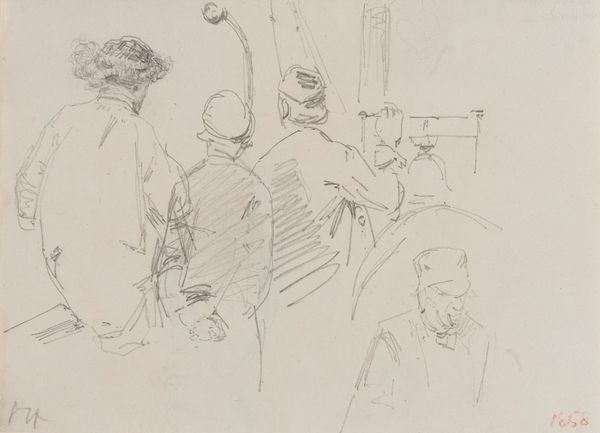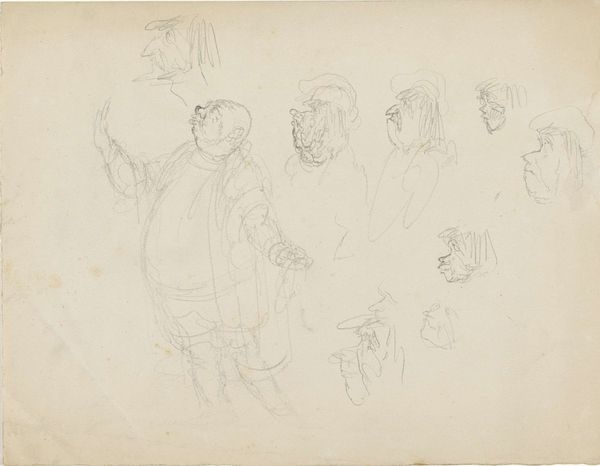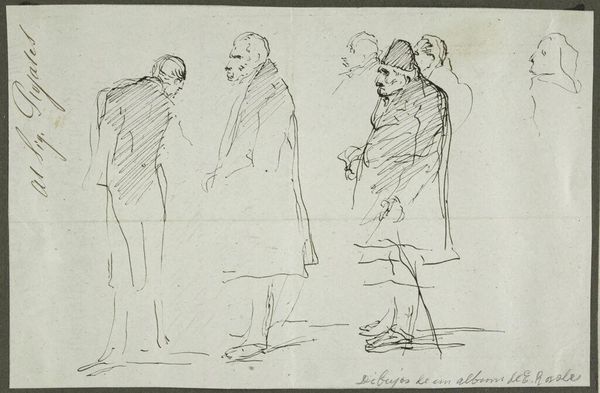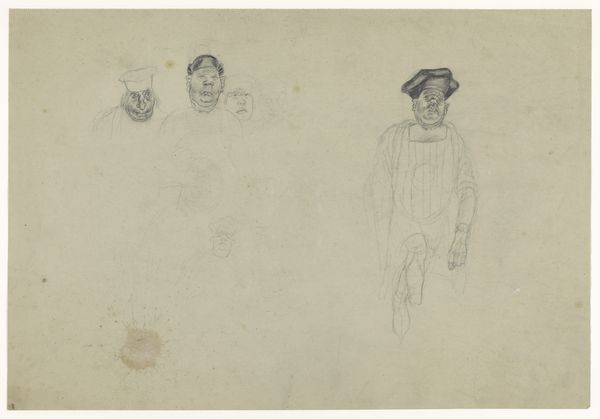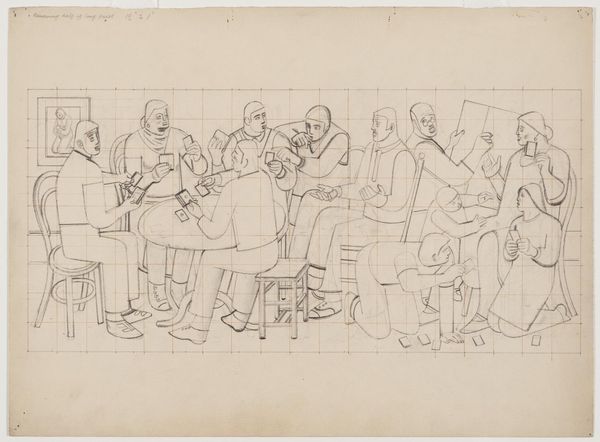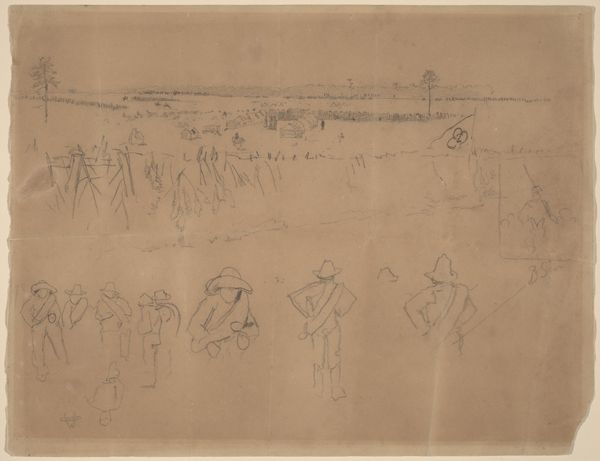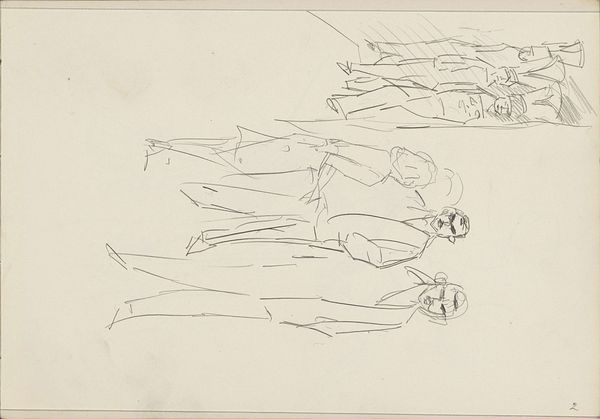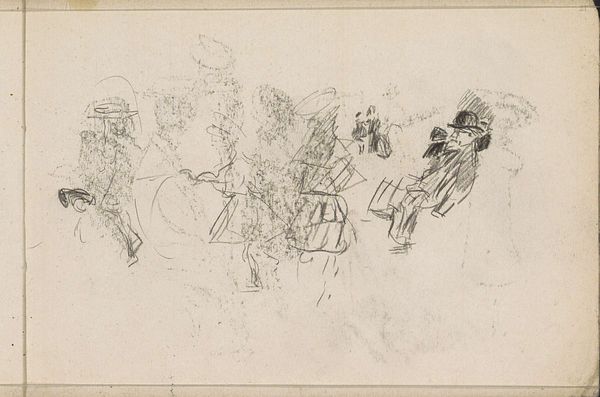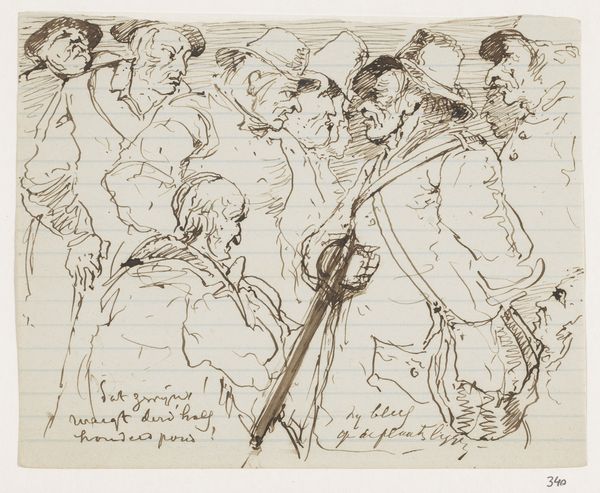
drawing, pencil
#
portrait
#
drawing
#
light pencil work
#
pencil sketch
#
incomplete sketchy
#
figuration
#
personal sketchbook
#
idea generation sketch
#
ink drawing experimentation
#
pen-ink sketch
#
pencil
#
line
#
sketchbook drawing
#
storyboard and sketchbook work
#
academic-art
#
sketchbook art
Dimensions: height 331 mm, width 445 mm
Copyright: Rijks Museum: Open Domain
Curator: Here we have “Zes staande professoren,” or “Six Standing Professors,” a pencil drawing by Henk Henriët, created between 1936 and 1940. It's currently held here at the Rijksmuseum. Editor: The ephemeral nature of pencil on paper lends a feeling of tentative intellectualism to the group; an almost ethereal weightiness offset by the light touch. Curator: Yes, it certainly captures the sense of fleeting thought. The composition presents a study in receding depth. The six figures diminish in clarity and detail as they move towards the background. We might ask ourselves, is this simply an artistic device, or is it suggesting something about memory and importance? Editor: Interesting! One might interpret these six figures as symbols of established knowledge. Their formal attire and bearing—in the robes of their offices—speaks to their role as keepers and transmitters of a cultural legacy, doesn’t it? Curator: Perhaps, though the sketchy nature of the rendering prevents them from seeming overly authoritarian. Note the deliberate use of line. Henriët uses varied thicknesses and densities of line to create areas of emphasis. See, the figure in the foreground uses a comparatively strong outline that slowly dissolves towards the background figures who are hinted at with the most delicate strokes. Editor: Absolutely! The leading professor gesticulates with his open hand, which perhaps invites his audience not just to listen, but to participate in the creation and recreation of shared cultural narratives? His forward foot also makes him appear, at once, both solid and ready for progress. Curator: Good observation. The negative space above them creates a stark void too; this compositional choice, however simple, draws attention to the figures as central and perhaps all-knowing characters. But then, the diagrammatic element in the top-left introduces a questioning tension. Is the work reverent, satirical, or both? Editor: It strikes me that Henriët offers no simple answers; only questions. The open composition encourages viewers to bring their own experience into play and to engage with both cultural history and personal narratives of learning and growth. Curator: Indeed. I am now newly sensitive to that cultural dimension—Henriët prompts reflection on tradition and progress; inviting a dynamic reassessment of authority in intellectual spheres. Editor: It is interesting to consider how such a quickly executed, perhaps casual sketch, contains such depths. Thank you for guiding me toward it.
Comments
No comments
Be the first to comment and join the conversation on the ultimate creative platform.
